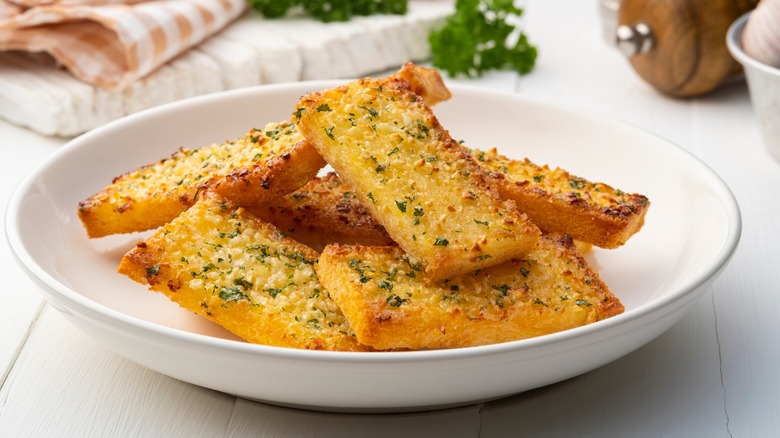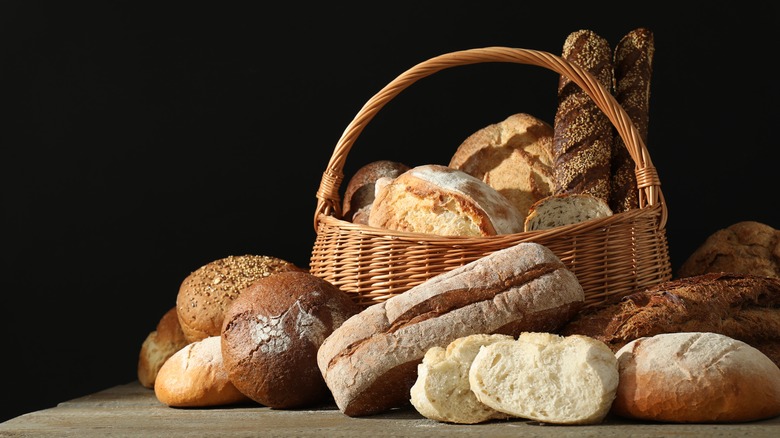How To Make Garlic Bread When You Don't Have A Crusty Loaf Sitting Around
Homemade garlic bread is an easy treat for any meal, but not everyone always has a loaf of crusty, fluffy bread just sitting around. No problem — you can make it with just about any type of bread you have lying around from hot dog buns to Wonder Bread!
If your individual pieces of bread have a crust on one side, like a hamburger or yeast roll, you might want to bake it rather than pan-fry it. Seasonings won't stick as well to a crust as they will to an airy, white interior, so flavoring and pan-frying both sides just means you'll lose a ton of taste. However, seasoning up one side and baking it in the oven transforms a pillowy crust into a crusty one while letting all the butter and garlic on the top melt and suffuse the whole piece. Most simple garlic bread recipes call for baking between 350 and 400 degrees Fahrenheit. If you want a crunchier result, bake it closer to 350 to dry out the crust.
If, however, you use something like sliced white bread, feel free to season both sides and pan-fry them both! This is a dead simple way to create something like Texas Toast that is perfect for sopping up leftover sauce or soup. If you can, put a small weight on the tops of the bread to ensure each side has complete contact with your cooking surface, giving you an even, golden-brown result.
What breads to never use for garlic bread
The ideal garlic bread uses something crusty on the outside, white and fluffy on the inside, and with little inherent flavor that could overwhelm your seasoning. You want something with enough air bubbles through it to provide plenty of nooks and crannies for the butter and garlic to seep in but not so many it looks like Swiss cheese.
While rye bread may be the best store-bought bread for savory sandwiches, it's also one of the worst for garlic bread. Dense and often thickly cut, it's great for supporting towers of deli meats but horrible at developing a crispy shell while remaining fluffy on the inside. Much like pumpernickel and other dark breads, it has a ton of flavor that's fantastic for pastrami and mustard, but a bad combination for rich butter, garlic, and salt.
On the other side of the bread spectrum, you'll also want to avoid light, sweet breads like challah and brioche. While their textures are fantastic for garlic bread, the additional sweetness pairs poorly with the savory flavors we associate with garlic bread. Additionally, both use a lot of eggs, which makes them already quite rich, so the addition of extra butter may make them too decadent for most palates.


